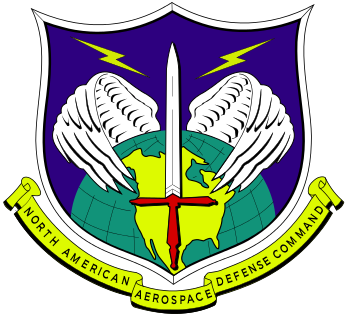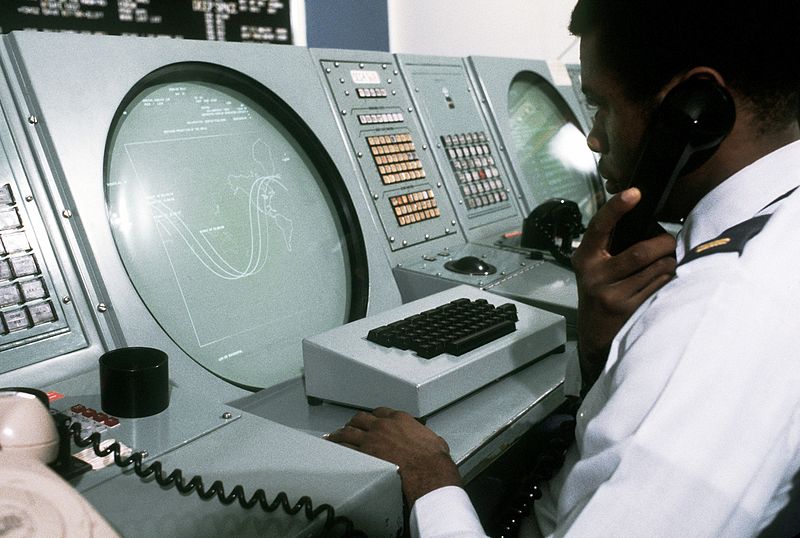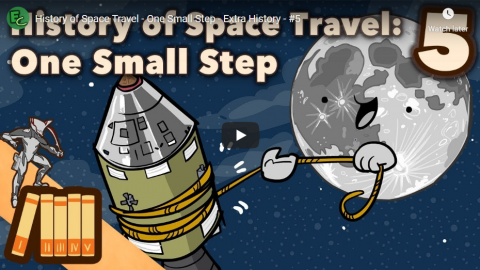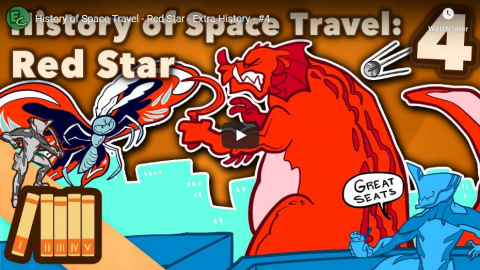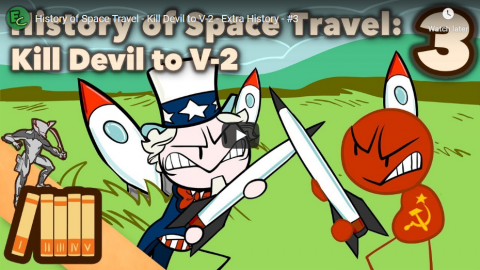Overly Sarcastic Productions
Published 27 Nov 2020Thanks to longtime patron Volt for requesting this topic!
We know their names! We know their symbols! We know there’s a truly staggering number of websites dedicated to their stereotypical personality traits! But what do we know about their stories? Let’s discuss!
FUN FACT I GLOSSED OVER IN THE VIDEO: like I said, it’s REALLY hard to determine when these constellations entered Greece. Most people set the date at 300ish, when Eudoxus codified the Greek calendar based on the Babylonian one — but that clashes with the fact that Heracles’s labors predate that by at least three centuries, and they’ve had those zodiacal themes since that lost epic poem was initially written. We know, therefore, that the Babylonian zodiac entered greece between Homer’s time (when he conspicuously didn’t mention them — and neither did Hesiod in his Astronomia) and Peisander’s time (author of the lost Heracleia), basically the interval between 800 and 600 CE. The phoenician traders carrying that info is a reasonable assumption, especially considering how important the stars are to sailors navigating at night. But it is WILD to me how hard this is to research and how nobody seems to have really explored the timeline here!
Two Zodiac merch designs are available on our redbubble!
The modern constellations-only zodiac: https://www.redbubble.com/shop/ap/634…
The MUL*APIN Babylonian zodiac: https://www.redbubble.com/shop/ap/634…Our content is intended for teenage audiences and up.
PATREON: https://www.Patreon.com/OSP
MERCH LINKS: http://rdbl.co/osp
OUR WEBSITE: https://www.OverlySarcasticProductions.com
Find us on Twitter https://www.Twitter.com/OSPYouTube
Find us on Reddit https://www.Reddit.com/r/OSP/
November 28, 2020
Miscellaneous Myths: The Zodiac
June 28, 2020
Why is the British government buying part of OneWeb?
As Tim Worstall points out, the British government’s decision to buy 20% of the satellite company OneWeb doesn’t actually make any economic sense:
… OneWeb – in which the UK will own a 20% stake following the investment – currently operates a completely different type of satellite network from that typically used to run such navigation systems.
“The fundamental starting point is, yes, we’ve bought the wrong satellites,” said Dr Bleddyn Bowen, a space policy expert at the University of Leicester. “OneWeb is working on basically the same idea as Elon Musk’s Starlink: a mega-constellation of satellites in low Earth orbit, which are used to connect people on the ground to the internet.
The actual answer is that we don’t need to buy into anyone’s system at all. Just as we shouldn’t have into [EU satellite system] Galileo in the first place.
For, d’ye see, GPS is a public good. The US allows anyone to use the signals. Not that they can really stop people doing so either. Not unless they take the whole system down.
So, there’s the US system, free for all to use. A global public good – this means it doesn’t matter who provides it, it is there. It also means we don’t need our own. Which, in turn, means we don’t and didn’t need the Galileo system, let alone another one after we’ve left that.
As I said, politics not even asking the right question. They’re asking “which new system should we have?” when the correct questions is “why do we need a new system?” and given that the answer to the second is we don’t therefore the first is entirely moot.
Even setting aside the question of what the satellite system will be capable of, as the market is already in the process of developing and deploying the equipment, why does the British government think its investment is necessary?
May 10, 2020
QotD: “Shirtstorm” and other forms of systematic patriarchal oppression of women
Shirtstorm was more of the same. Rose Eveleth, Vagina Vigilante, might not know much about probes or comets, or have much interest in them. One gets a feeling in her mind aerospace is that icky thing that sweaty, nerdy boys do. So, forced to cover it (or snatching it up as a prize assignment) for her paper, she paid attention to the one important thing in the world: herself. And since she’s female, she projected her prejudices onto all other females, and decided women everywhere would be put off science by a man’s shirt decorated with “space pinups.” A shirt made by a woman. A shirt worn amid a team whose leader was a woman who saw nothing wrong with it. But Vagina Vigilante was on the job! One gets the feeling she didn’t do very well at science, and now she had a REASON. It was the sexism of the field, manifest in a shirt.
Which totally justified making a rocket scientist cry on the day of his greatest triumph. After all, people like him had ruined her life, right?
But it gets worse than that – there was an entire campus filled with supposedly educated (ah!) women terrorized by the statue of a sleep walking man.
And then there’s the ever-elastic definition of “sexual assault” which – I’m not making this up – can now be ratcheted down to “Looked at me in a way that made me feel uncomfortable” or, for that matter “failed to sexually assault me.” Oh, sorry, that last was the definition of racism. Some Palestinian woman looked at rape statistics and found that Israeli women are raped by Palestinian men in much higher numbers than Palestinian women are raped by Israeli men, and immediately concluded this is because Israelis are racist. It beggars the mind.
Another thing that beggars the mind is the progressive image of women as great warriors. You know, in all the movies and half the books (often without supernatural explanation) a 90 lb chick can beat 300 lb men. And women were always great fighters throughout the ages. And, and, and …
And yet, women are peaceful – peaceful, d*mn it. This is why “peaceful planet of women” is a trope on TV tropes. Not just a trope, but a dead horse one.
Attempts to square that circle have included the explanation that women are only violent because patriarchy. There needs be nothing else said because in this context, and with apologies to the ponies, Patriarchy Is Magic. Honorable mention on trying to square the circle must go to Law and Order‘s attempted episode on Gamer Gate where the game the woman designer had written was about Peaceful Amazon Warriors.
Sarah Hoyt, “Give Me My Smelling Salts, Ho! A Blast From The Past From April 2015”, According to Hoyt, 2020-01-22.
April 27, 2020
Entrepreneurs beyond the atmosphere
Doug Bandow reacts to Donald Trump’s executive order that begins to clear the way for private enterprise in space:
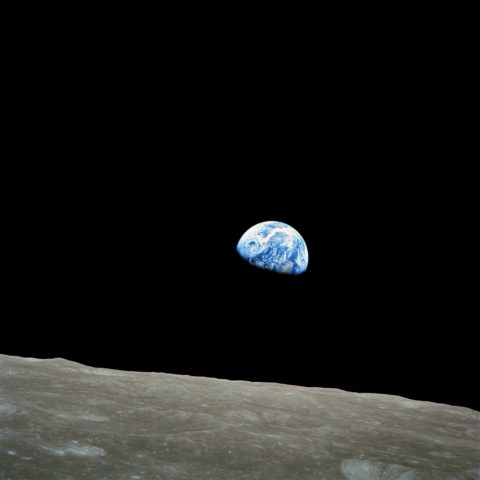
Taken by Apollo 8 crewmember Bill Anders on December 24, 1968, at mission time 075:49:07 (16:40 UTC), while in orbit around the Moon, showing the Earth rising above the lunar horizon.
Despite the current chaos caused by the coronavirus, Washington still must consider the future. Which explains the president’s new executive order that would allow private resource development on the moon and asteroids. It clearly rejects the “common heritage of mankind” rhetoric deployed by the United Nations on behalf of the Law of the Sea Treaty, which four decades ago created a special UN body to seize control of seabed resources.
The Future of Space Exploration
The EO issued earlier this month explained that
Successful long-term exploration and scientific discovery of the Moon, Mars, and other celestial bodies will require partnership with commercial entities to recover and use resources, including water and certain minerals, in outer space.
The measure began the process of revising an uncertain legal regime which currently discourages private sector development.
The administration pointed to the 1979 Agreement Governing the Activities of States on the Moon and Other Celestial Bodies (known as the Moon treaty) and the 1967 Treaty on Principles Governing the Activities of State in the Exploration and Use of Outer Space, including the Moon and Other Celestial Bodies (typically called the Outer Space Treaty). Neither is friendly to entrepreneurs or explorers with a commercial bent.
In response, the president announced that
Americans should have the right to engage in commercial exploration, recovery, and use of resources in outer space, consistent with applicable law. Outer space is a legally and physically unique domain of human activity, and the United States does not view it as a global commons. Accordingly, it shall be the policy of the United States to encourage international support for the public and private recovery and use of resources in outer space, consistent with applicable law.
Space is a Long-Term Prospect
The document’s main directive is for the Secretary of State, in cooperation with other agencies, to “take all appropriate actions to encourage international support for the public and private recovery and use of resources in outer space.” The secretary is to “negotiate joint statements and bilateral and multilateral arrangements with foreign states regarding safe and sustainable operations for the public and private recovery and use of space resources.”
Obviously, the administration’s attention is directed elsewhere at the moment. However, the potential benefits of turning to space are significant. The value of scientific research is obvious and continues to drive government agencies such as NASA. Launch services and space tourism have caught the interest of private operators. Such activities offer fewer legal and practical difficulties than attempting to establish some sort of long-term presence in the great beyond.
More complex development of space is a longer-term prospect. However, that makes it even more imperative to encourage innovation by creating institutions and incentives that encourage responsible development of what truly is the “final frontier.”
April 22, 2020
Can We Build A Space Elevator? | Earth Lab
BBC Earth Lab
Published 5 Aug 2013Getting to space in a rocket is expensive! One of the most popular alternative ideas is the space elevator, but is it really possible?
Here at BBC Earth Lab we answer all your curious questions about science in the world around you. If there’s a question you have that we haven’t yet answered or an experiment you’d like us to try let us know in the comments on any of our videos and it could be answered by one of our Earth Lab experts.
April 13, 2020
Prehistory Summarized: The Early Universe
Overly Sarcastic Productions
Published 23 Sep 2015Blue hits us with some physics! Hold onto your butts. That butt is made of star stuff, ya know. It’s very special. Be proud of that butt. It was forged in the heart of a supernova.
Anyway, yeah, physics.
Guest starring yours truly! Watch out for my extremely subtle and unobtrusive cameos.
The ninja thing is a reference to earlier videos. I think he shows up in the College video and the one about The Borgias.
February 3, 2020
QotD: The “fine-tuned universe”
What is happening to our country, and our universities? It sometimes seems that everything is coming apart. To understand why, I have found it helpful to think about an idea from cosmology called “the fine-tuned universe.” There are around 20 fundamental constants in physics — things like the speed of light, Newton’s gravitational constant, and the charge of an electron. In the weird world of cosmology, these are constants throughout our universe, but it is thought that some of them could be set to different values in other universes. As physicists have begun to understand our universe, they have noticed that many of these physical constants seem to be set just right to allow matter to condense and life to get started.
For a few of these constants, if they were just one or two percent higher or lower, matter would have never condensed after the big bang. There would have been no stars, no planets, no life. As Stephen Hawking put it, “the remarkable fact is that the values of these numbers seem to have been very finely adjusted to make possible the development of life.”
Some have suggested that this fine-tuning might be evidence for the existence of God. This would be a deist conception of God, of the sort that Thomas Jefferson, James Madison, and most of the Founding Fathers believed in: a God who set up the universe like a giant clock, with exactly the right springs and gears, and then set it in motion.
Jonathan Haidt, “The Age of Outrage: What the current political climate is doing to our country and our universities”, City Journal, 2017-12-17.
January 31, 2020
Why The US Military Made GPS Free-To-Use
Real Engineering
Published 16 Jun 2017Get your Real Engineering shirts at: https://store.dftba.com/collections/r…
Patreon:
https://www.patreon.com/user?u=282505…
Instagram:
https://www.instagram.com/brianjamesm…
Twitter:
https://twitter.com/Fiosracht
Website:
http://www.RealEngineering.netThank you to my patreon supporters: Adam Flohr, darth patron, Zoltan Gramantik, Henning Basma, Karl Andersson, Mark Govea, Mershal Alshammari, Hank Green, Tony Kuchta, Jason A. Diegmueller, Chris Plays Games, William Leu, Frejden Jarrett, Vincent Mooney, Ian Dundore, John & Becki Johnston. Nevin Spoljaric
Once again thank you to Maeson for his amazing music. Check out his soundcloud here: https://soundcloud.com/maeson-1/tracks
January 24, 2020
From a Canadian perspective, “NORAD … is more important than NATO”
The American government has once again expressed a strong desire to update the 1957 North American Air Defence Commmand arrangement between the US and Canada for defence of the North American continent. It’s a Cold War relic to some (particularly some in the Prime Minister’s Office and cabinet), but it has a very real value to Canada, as Ted Campbell explains:
In 1957 Canada and the USA agreed to create the North American Air Defense Command. It is a “combined” command, American and Canadian people, civilian and military, work together, in combined headquarters, to conduct an active aerospace defence effort over the continent we share. Americans and Canadians work side-by-side managing the airspace, detecting intruders and identifying and intercepting them and so on.
NORAD, I would argue, is more important than NATO.
First, it is about defending our own homeland.
Second, it is about defending the US strategic deterrent, which has, arguably, done more to keep global peace than all the efforts of the United Nations, combined.
NORAD modernization and expansion should be at the top of Canada’s defence policy agenda. Specifically:
- First, billions of dollars, likely tens of billions of dollars are going to be needed to upgrade the surveillance and warning system. We need new radars, terrestrial and space-based, and upgraded control systems to do the job properly;
- Second, Canada needs to buy enough (85+ is just the very barest of bare minimums) of the right new fighter jet; and
- Third, Canada needs to join the American ballistic missile defence system.
I believe that this issue: the shared defence of our, shared, continent and, therefore, the defence of the American heartland and of America’s strategic deterrent is a key, perhaps even the key element in our most important foreign relationship. […] The knowledge that Canada is doing a full and fair share of defending our shared continent, of defending America, is not lost on admirals and generals, diplomats and senior civil servants, representatives and senators in the US Congress, pundits and political leaders in waiting in the think-tanks and senior staff in the White House, even if Donald J Trump is not impressed … IF we are doing a full and fair share.
Right now, we are not.
December 28, 2019
QotD: The “missing” mass of the universe
For something to exist, it has to be observed.
For something to exist, it has to have a position in time and space.
And this explains why nine-tenths of the mass of the universe is unaccounted for.
Nine-tenths of the universe is the knowledge of the position and direction of everything in the other tenth. Every atom has its biography, every star its file, every chemical exchange its equivalent of the inspector with a clipboard. It is unaccounted for because it is doing the accounting for the rest of it, and you cannot see the back of your own head.*
Nine-tenths of the universe, in fact, is the paperwork.
* Except in very small universes.
Terry Pratchett, Thief of Time, 2001.
December 26, 2019
The Origins of the Christmas Star?! – December 25th – TimeGhost of Christmas Past – DAY 2
TimeGhost History
Published 25 Dec 2019What did Mark Twain have in common with Genghis Khan and William the Conqueror? And how is this all tied into a Christmas Miracle? Well, much of this can be answered by a bright bulb of light, that astronomer Johann Palitzsch observed on Christmas Day 1758…
Join us on Patreon: https://www.patreon.com/TimeGhostHistory
Hosted by: Indy Neidell
Written by: Rune Væver Hartvig and Spartacus Olsson
Directed by: Spartacus Olsson and Astrid Deinhard
Executive Producers: Bodo Rittenauer, Astrid Deinhard, Indy Neidell, Spartacus Olsson
Creative Producer: Joram Appel
Post-Production Director: Wieke Kapteijns
Research by: Rune Væver Hartvig
Edited by: Mikołaj Cackowski
Sound design: Marek KaminskiColorizations:
Julius Jääskeläinen – https://www.facebook.com/JJcolorization/Sources:
King William I (“The Conqueror”), courtesy of National Portrait Gallery
Comet Halley and the Milky Way, courtesy of ESO (https://www.eso.org/public/images/com…)Soundtracks from Epidemic Sound:
Howard Harper-Barnes – “A Sleigh Ride Into Town”
Leimoti – “The Christmas Thieves”A TimeGhost chronological documentary produced by OnLion Entertainment GmbH.
December 14, 2019
History of Space Travel – Guided by Starlight – Extra History – #6
Extra Credits
Published 12 Dec 2019What happened after we touched down on the moon? And where are we going in the future? While we may have lost the glitz and glamor of the Space Race, we have continued to make incredible progress in reaching the stars. We’ve come together to build space stations while in space, create the international space station, and started developing new technologies that could take us to Mars and beyond.
Start your Warframe journey now and prepare to face your personal nemesis, the Kuva Lich — an enemy that only grows stronger with every defeat. Take down this deadly foe, then get ready to take flight in Empyrean! Coming soon! http://bit.ly/EHWarframe
December 7, 2019
History of Space Travel – One Small Step – Extra History – #5
Extra Credits
Published 5 Dec 2019Start your Warframe journey now and prepare to face your personal nemesis, the Kuva Lich — an enemy that only grows stronger with every defeat. Take down this deadly foe, then get ready to take flight in Empyrean! Coming soon! http://bit.ly/EHWarframe
The United States was losing the space race. A number of unfortunate missteps and mistakes had hindered their progress. But the United States had also structured its space program entirely differently from the USSR. Instead of being helmed by the military, the National Aeronautics & Space Administration was created by Eisenhower with an emphasis on exploration and research. And in the end, the later but more advanced satellites will collect the data required a dream firmly placed in the American consciousness by JFK. A dream to place a man on the moon.
From the comments:
Extra Credits
19 hours ago
The plaque still gives me goosebumps in the best way possible. Hopefully one day we can live up to its promise of peace. Be good to one another. ❤️And thanks to Rebecca Ford (the voice of Lotus) for voicing space mom at the end of each of these episodes. They’ve been a blast to make and we hope that you all have enjoyed this trip to the stars.
November 29, 2019
History of Space Travel – Red Star – Extra History – #4
Extra Credits
Published 28 Nov 2019Start your Warframe journey now and prepare to face your personal nemesis, the Kuva Lich — an enemy that only grows stronger with every defeat. Take down this deadly foe, then get ready to take flight in Empyrean! Coming soon! http://bit.ly/EHWarframe
While rockets had been proven to be indispensable to the Second World War, the idea to send people up into orbit was still seen as fantasy. Space was important only as a method to further the range of missiles meant to land oceans away from their original launch point. But a man named Korolev will change all of that, with work so secretive, he will be referred to as Chief Designer for nearly his entire life. But we all know the name of his first project into space: Sputnik.
From the comments:
Extra Credits
1 day ago
We weren’t able to fit her into the episode, but the other famous first cosmonaut in space is Laika, the Soviet space dog. She was a stray who was taken in by the program to test the Sputnik 2 and some of its life support features (like a coolant fan). Unfortunately, Laika did not return from her mission alive but she’s still regarded highly in the history of space flight and has become a symbol for the space race and animal testing in general. Look her up!
I remember reading in Robert Heinlein’s Expanded Universe of the day on his tour of the Soviet Union in 1960 when he and his wife were told by a group of Red Army cadets of a Soviet rocket launch carrying a human into orbit for the first time. The story was officially denied and the capsule was said to be unmanned after all. Wikipedia says:
According to Gagarin’s biography, these rumours were likely started as a result of two Vostok missions equipped with dummies (Ivan Ivanovich) and human voice tape recordings (to test if the radio worked) that were made just prior to Gagarin’s flight.
In a U.S. press conference on February 23, 1962, colonel Barney Oldfield revealed that an uncrewed space capsule had indeed been orbiting the Earth since 1960, as it had become jammed into its booster rocket. According to the NASA NSSDC Master Catalog, Korabl Sputnik 1, designated at the time 1KP or Vostok 1P, did launch on May 15, 1960 (one year before Gagarin). It was a prototype of the later Zenit and Vostok launch vehicles. The onboard TDU (Braking Engine Unit) had ordered the retrorockets to fire to recover, but due to a malfunction of the attitude control system, the spacecraft was oriented upside-down, and the firing put the craft into a higher orbit. The re-entry capsule lacked a heat shield as there were no plans to recover it. Engineers had planned to use the vessel’s telemetry data to determine if the guidance system had functioned correctly, so recovery was unnecessary.
November 16, 2019
History of Space Travel – Kill Devil to V-2 – Extra History – #3
Extra Credits
Published 14 Nov 2019Start your Warframe journey now and prepare to face your personal nemesis, the Kuva Lich — an enemy that only grows stronger with every defeat. Take down this deadly foe, then get ready to take flight in Empyrean! Coming soon! http://bit.ly/EHWarframe
Early flight started as a utopian dream but quickly became the military’s top priority: first as reconnaissance vehicles, and then as weapons in their own right. After WW1, the threat of German aircraft led to the Treaty of Versailles banning Germany from having an airforce at all. But the Germans also found a loophole: rockets didn’t count as an airforce. Enter Werner Von Braun & the V-2 rockets.






